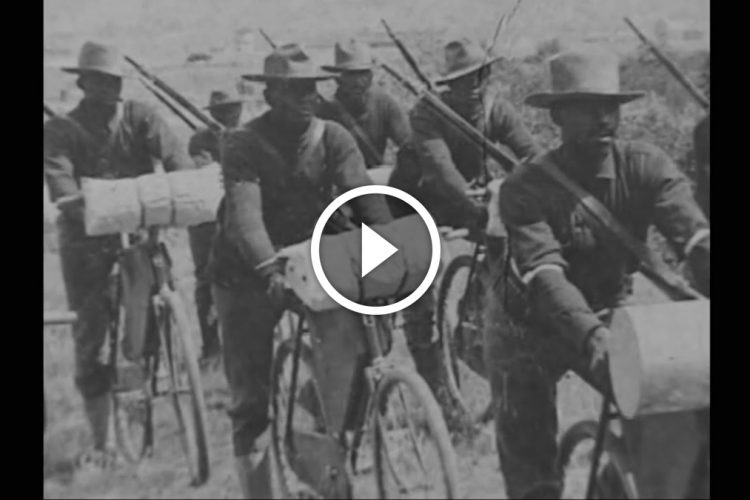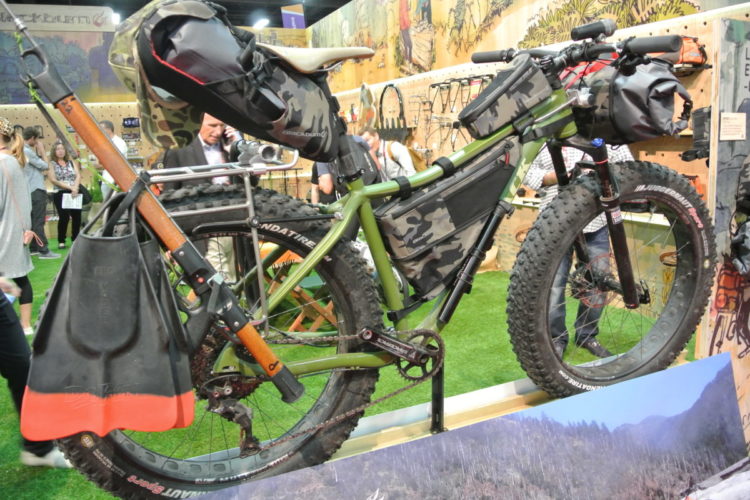
Lots of us dream of loading the bike for a multi-day backcountry adventure, but then reality sets in. You have the bike, but you might be looking at hundreds of dollars, if not thousands, to outfit your bike and make it ready for bikepacking. That assumes the bags will fit on your current bike, and let’s face it, your everyday bike probably isn’t the best tool for the job. That doesn’t mean you can’t see the wilds from your bike saddle, you just have to use a little ingenuity, creativity… and some cash never hurts.
Here are some alternative adventures to bikepacking that you can do with your current bike, without adding expensive equipment:
1. Sag Wagon
This is how many tour operators do it, so don’t reinvent the wheel. Pick an interesting backcountry road route and divide the number of miles by the number of people in your group. Everyone is responsible for that amount of driving. The driver follows the group or waits ahead.
The beauty of this method is you don’t have to go light or skimp on food or drinks, and you can carry spare parts and tools for repairs. You can also link sections of singletrack with sections of roads. If you’re in a group of four, you will ride 75 percent of the time and drive 25 percent. Not a bad deal.
2. Huts and Yurts

Backcountry skiers have relied on these structures for decades, or probably centuries if you want to get technical. Huts and yurts are typically furnished, so all you have to bring is bedding and food. Some operators will also haul your gear into the yurt or hut for a fee. The Forest Service also rents backcountry cabins for camping, so that’s another option.
In a best-case scenario, you ride your bike to the yurt, hut, or cabin, and your gear is there when you arrive. “Worst” case? You pack a sleeping bag and food on your bike along with your usual riding stuff, which is a lot easier and less hassle than packing everything else you need. You will have a bed, a kitchen, and complete protection from elements, as well as a comfortable, roomy place to hang out. And they’re usually located in beautiful places, so you get a room with a view.
To find operators, do an Internet search for “backcountry huts and yurts.”
See Also: “Mountain Biking Durango to Moab“
3. Shuttle
This is pretty straightforward. You have a vehicle at both ends of your route. Leave your camping gear, food, and drinks at the end point, and then ride unencumbered. But let’s go beyond the basics and be a little more creative. Pick a starting point and ending point with a campground between them. Run your shuttle, and drop your gear off at the campground. Many Forest Service campgrounds have a campground host, and you can make arrangements to stash your gear at their campsite until you arrive. Another option is to set up your camp and give it a lived-in look. It’s rare that camps get ripped off, but beware, there are scumbags in the woods, too. Either way, when you shuttle a vehicle to the end, you get to ride without hauling gear, camp in a campground with all its amenities (outhouses are your friend), and get two full days of riding and a night of camping without having to haul gear and food.
4. Drop Camps

Want to really get off the beaten path? Hire a horsepacker to haul your gear into the backcountry. Sound farfetched? It’s not. Most Western states have hunting outfitters who use pack strings to reach distant backcountry camps during the fall. Summer is their slow time, and some advertise drop-camp services for hikers, while other outfitters do it on request. As a bonus, packers know the backcountry intimately and may be able to help you map your route. But buyer beware, they’re typically not mountain bikers, and their gauge of what’s rideable might be much different than yours. Don’t expect a pack string and wrangler to work cheap, but if you do your homework and figure out an interesting route, it can be a fantastic trip deep into the backcountry that would be extremely challenging if you had to carry all your gear.
5. Credit Card Camping
Granted, this can’t be done everywhere, but it’s a viable option in more places than you might imagine, and a damned comfortable way to “camp.” The ideal route for this is a rail to trail because railroads were built to connect communities, so there’s usually towns along the route. Nearly every state has rails to trails, which are old railroad beds converted to non motorized recreation trails.
Here’s how it works: Stash a credit card and a change of clothes on your bike or in a backpack and take off on an old rail bed. Pick a destination in a nearby town with a motel and restaurant. Most podunk towns have both. When you get there, whip out the plastic. You get a hot shower, a soft bed, and hot meals that you don’t have to prepare. In the morning, you’re back on the trail and off to your next stop.
The hitch to this is you have to do an out-and-back ride or run a vehicle shuttle, or be brave and hitchhike back to your starting point. Your call. Go to http://www.railstotrails.org to see possible routes throughout the U.S.
Your Turn: Do you know of any other creative ways to have epic mountain bike adventures in the backcountry? Share them in the comments section below!



















